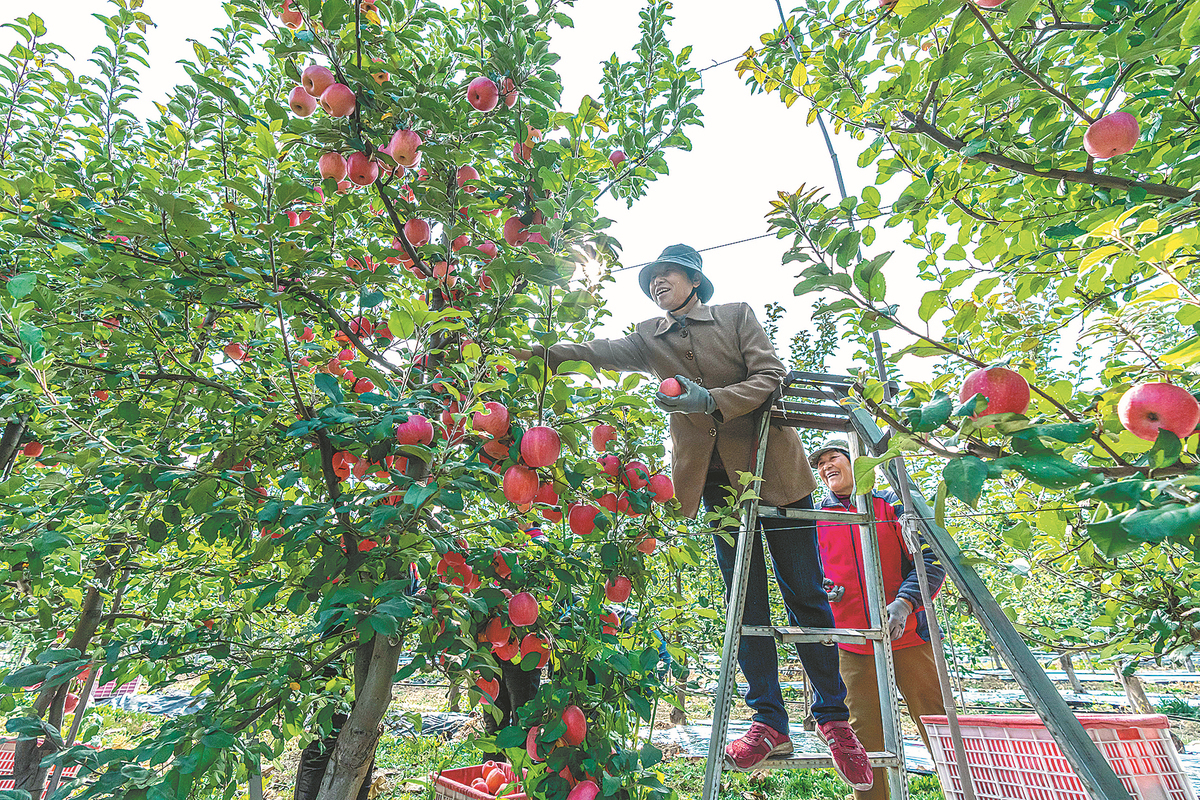
Farmers pick apples at an orchard in Wanrong county, Yuncheng, Shanxi province, in November. [Photo/China Daily]
Prompted by the increasing uncertainties arising from the country's external development environment, the country needs to pay particular attention to protecting its arable land and core seed resources and building high-quality farmland to ensure the nation always holds the initiative to guarantee its food security.
The Central Rural Work Conference held in Beijing on Friday and Saturday has served to form a to-do list for the formation of the top-level design to advance rural vitalization in an all-round way and to accelerate the construction of a strong country in agriculture.
The conference not only highlighted the great significance the Communist Party of China Central Committee attaches to these objectives but also the urgency it tried to convey to authorities at various levels to act as real doers of these daunting tasks.
That calls for remarkable pragmatism to face and overcome the institutional and practical obstacles that have prevented modern agriculture from taking root in one of the oldest agricultural civilizations in the world.
Policymakers must formulate scientific plans to accelerate the modernization of agriculture and do more to lay the foundation for its long-term benefits. In the process, governments at various levels should take into account local conditions, adopt a result-oriented approach, and address the pressing problems in agricultural and rural development that farmers complain of most, strictly avoiding vanity projects that are divorced from reality.
What is imperative is that manpower, material resources and the necessary financial inputs must be provided to support long-overdue systematic reforms and agricultural science and technology research and development.
A key criterion for progress in this work, as well as a crucial factor deciding whether it can be sustainable, is to see whether farmers become the primary beneficiaries of the cause, and whether the urban-rural development gap is effectively bridged by it.
Neither rural vitalization nor the adoption of modern agriculture are easy goals to achieve, as they mean disrupting the existing distribution pattern of interests that generally see villages as appendages to cities, and rural dwellers in an inferior position to urban residents.
That entails the nation doubling down on endeavors to repay the historical debts in this regard through pressing ahead with painful reforms and realizing historical breakthroughs in core know-how.
It's necessary to remove the institutional barriers that prevent the equal exchanges and two-way flows of production factors between urban and rural areas, and facilitate the flow of development factors as well as various services into rural areas.
The arduousness of the tasks speaks volumes of their potential for paradigm-shifting changes. The conference reinforced that the country must press ahead with the work related to agriculture and rural revitalization at full steam and vigorously promote agricultural and rural modernization.


